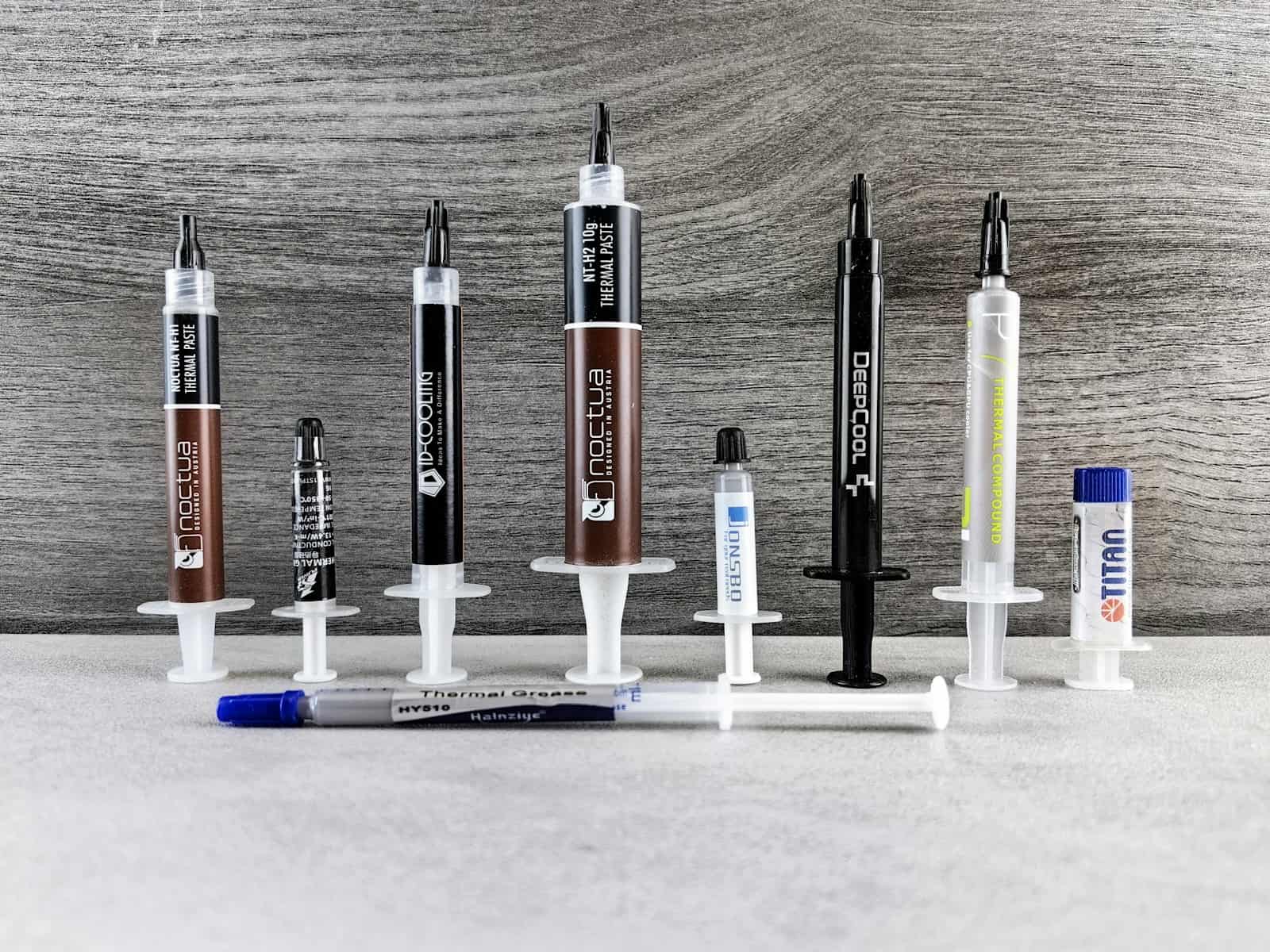Thermal paste is crucial for keeping your computer’s CPU and GPU cool because it fills tiny gaps between the heat sink and the processor, ensuring efficient heat transfer. Generally, thermal paste can last between three to five years depending on usage, climate, and quality. Knowing when to replace thermal paste can prevent overheating and extend the life of your components. Signs that it needs replacement include increased temperatures during normal operation or after a stress test. Regular maintenance, such as changing the thermal paste every couple of years, can help keep your system running smoothly and efficiently. Choosing the right thermal paste and applying it properly also play a significant role in its longevity. High-quality pastes tend to last longer and provide better thermal conductivity. Regular checks and timely replacements ensure effective cooling and optimal performance for your CPU and GPU.
Thermal Paste Lifespan: When to Reapply
Average Lifespan
Most thermal pastes last between 3 to 5 years with normal use. Some high-quality pastes may even last up to 8 years or more. However, it’s important to note that lifespan can vary depending on several factors.
Factors Affecting Lifespan
- Quality of Paste: Higher quality pastes tend to last longer due to their superior thermal conductivity and stability.
- Usage: Frequent overclocking or running your computer at high temperatures can shorten the lifespan of thermal paste.
- Environment: High humidity or dust can degrade thermal paste faster.
Signs of Degradation
- Increased Temperatures: If you notice your CPU or GPU temperatures creeping up, it could be a sign that your thermal paste is losing its effectiveness.
- Drying Out or Separation: Check the paste visually. If it looks dry, crumbly, or separated, it’s time for a replacement.
When to Replace
While the general guideline is 3-5 years, it’s best to monitor your temperatures and check the paste’s condition regularly. If you notice any of the signs of degradation, don’t hesitate to replace it sooner.
Thermal Paste Lifespan Comparison
| Type of Paste | Average Lifespan |
|---|---|
| Low-end | 2-3 years |
| Mid-range | 3-5 years |
| High-end | 5-8 years |
Remember, it’s better to be safe than sorry when it comes to thermal paste. Replacing it before it completely fails can help prevent overheating and damage to your components.
Key Takeaways
- Thermal paste typically lasts between three to ten years.
- Increased temperatures can signal the need for replacement.
- High-quality paste and proper application ensure better performance.
Understanding Thermal Paste and Its Function
Thermal paste improves the transfer of heat between a CPU and heat sink, ensuring your computer runs efficiently. Key aspects of thermal paste include its composition, application, and how to maintain optimal conditions.
Composition and Types
Thermal paste is made from different materials to suit various needs. Silicone-based pastes are common and easy to apply. They are non-conductive and safe for beginners. Ceramic-based pastes contain ceramic particles and also offer non-conductive properties, making them a good choice for general use.
Metal-based pastes, like those containing silver or aluminum, provide superior thermal conductivity. They are ideal for those looking to maximize performance but are electrically conductive and require careful application. Carbon-based pastes, such as those with graphite, offer high thermal conductivity without electrical conductivity, providing a balance between safety and performance.
Applying and Reapplying Thermal Paste
Applying thermal paste correctly ensures efficient heat transfer. First, clean the CPU and heat sink to remove old paste. Apply a small, pea-sized amount of paste onto the center of the CPU. Spread it evenly to cover the entire surface. Use a cloth or a spreading tool for a uniform layer.
Monitor your CPU temperatures regularly. Over time, thermal paste can degrade, usually within 2-5 years depending on the type. Reapply new paste if temperatures rise or if you notice performance issues. Carefully remove the old paste before reapplying to avoid overheating.
Optimal Thermal Conditions and Monitoring
Storing thermal paste properly extends its lifespan. Keep it in a cool, dry place, away from direct sunlight. Ideal locations are drawers or cabinets, ensuring the cap is tight to prevent drying out. Store it between 15°C to 25°C for the best results.
Regularly monitor your CPU temperature using software tools. This helps ensure your paste functions correctly. Consider your climate; high humidity or extreme temperatures can affect paste lifespan and efficiency. If you live in hot or humid areas, check your thermal paste more frequently to maintain optimal performance.
Frequently Asked Questions
Thermal paste is important for keeping your computer cool. Here are answers to some common questions about how long it lasts and when it should be replaced.
What is the shelf life of unopened thermal paste?
Unopened thermal paste generally lasts about three to five years. Store it in a cool and dry place to ensure it stays effective.
After how many years should thermal paste be replaced on a CPU?
It’s recommended to replace thermal paste on a CPU every three to five years. However, high usage or poor cooling systems may require more frequent changes.
Does thermal paste degradation impact laptop performance over time?
Yes, degraded thermal paste can cause a laptop to overheat. This may slow down the laptop or cause it to shut down unexpectedly.
Is the longevity of thermal paste on a GPU different from that on a CPU?
Thermal paste on a GPU and a CPU typically lasts the same amount of time. Both should be checked and replaced every three to five years.
What are the signs of deteriorating thermal paste in a gaming PC?
Common signs include higher temperatures, louder fan noise, and sudden shutdowns or restarts. These indicate that the thermal paste may need replacement.
Does the efficiency of thermal paste diminish after application, and when should it be re-applied?
Yes, thermal paste efficiency diminishes over time. It should be re-applied every three to five years or if you notice symptoms of overheating.







